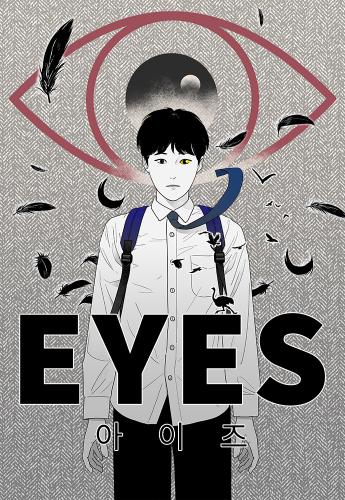Jessica Sorensen's The Art of Being Friends is a captivating exploration of friendship, self-discovery, and the complexities of navigating social dynamics in a new environment. Set against the backdrop of a high school in the seemingly idyllic town of Honeyton, the novel follows the journey of a socially awkward protagonist who seeks to reinvent herself as she embarks on her senior year. Sorensen deftly weaves themes of acceptance, trust, and the weight of secrets into a narrative that resonates with anyone who has ever felt like an outsider.
The story begins with the protagonist, whose name remains undisclosed, moving to Honeyton. This anonymity allows readers to project their own experiences onto her, making her journey feel personal and relatable. Sorensen captures the essence of being the "new girl" perfectly, illustrating the anxiety and hope that accompany such a transition. The protagonist's determination to start over is both inspiring and poignant, as she grapples with her social awkwardness while yearning for connection.
As she navigates her new surroundings, the protagonist quickly forms a friendship with a fellow student, which serves as a catalyst for her deeper connections with three enigmatic boys: Hunter, Zay, and Jax. These characters are introduced with an air of mystery, their wealthy backgrounds and rumored dangerous families adding layers of intrigue to the narrative. Sorensen skillfully develops these characters, allowing readers to see beyond their reputations. Each boy embodies different facets of charm and complexity, making them compelling figures in the protagonist's life.
One of the most striking aspects of The Art of Being Friends is its exploration of the theme of friendship. Sorensen delves into the nuances of forming bonds in a world where appearances can be deceiving. The protagonist's relationship with Hunter, Zay, and Jax evolves from initial curiosity to deep-seated camaraderie, showcasing the transformative power of friendship. The author highlights how friendships can serve as both a refuge and a source of conflict, particularly when secrets and hidden agendas come into play.
As the story unfolds, the reader is drawn into the web of secrets that envelops the characters. Sorensen expertly builds tension, revealing bits and pieces of the boys' pasts while keeping the reader guessing about their true intentions. This element of suspense adds depth to the narrative, as the protagonist must navigate her growing feelings for the boys while grappling with the fear of betrayal. The author’s ability to balance lighthearted moments with darker undertones creates a rich tapestry of emotions that keeps readers engaged.
Character development is another strong suit of Sorensen's writing. The protagonist undergoes significant growth throughout the novel, evolving from a timid newcomer to a confident young woman who learns to trust her instincts. Her interactions with Hunter, Zay, and Jax challenge her perceptions of friendship and loyalty, forcing her to confront her own insecurities. The boys, too, experience their own arcs, revealing vulnerabilities that make them relatable and human. Sorensen's portrayal of their struggles with family expectations and personal demons adds layers of complexity to their characters, making them more than just archetypes of the "bad boy" trope.
The setting of Honeyton plays a crucial role in the narrative, serving as both a picturesque backdrop and a character in its own right. Sorensen paints a vivid picture of the town, contrasting its outward charm with the underlying tensions that simmer beneath the surface. The school environment, rife with cliques and social hierarchies, mirrors the protagonist's internal struggles, creating a palpable sense of conflict that drives the story forward.
In terms of thematic resonance, The Art of Being Friends touches on the universal quest for belonging and the fear of rejection. Sorensen captures the essence of teenage angst and the desire to fit in, making the protagonist's journey all the more relatable. The novel also raises questions about the nature of trust and the impact of secrets on relationships. As the characters grapple with their hidden truths, readers are left to ponder the implications of honesty and vulnerability in their own lives.
Comparatively, Sorensen's work can be likened to novels such as We Were Liars by E. Lockhart and The Perks of Being a Wallflower by Stephen Chbosky, both of which explore themes of friendship, secrets, and the complexities of adolescence. However, Sorensen's unique voice and ability to blend lighthearted moments with deeper emotional currents set her apart. Her characters are not just vessels for the plot; they are fully realized individuals whose journeys resonate long after the final page is turned.
Overall, The Art of Being Friends is a beautifully crafted novel that captures the essence of youth, friendship, and the challenges of self-acceptance. Jessica Sorensen's engaging prose and relatable characters make this book a must-read for anyone who has ever felt like an outsider. The story's exploration of trust, loyalty, and the impact of secrets will leave readers reflecting on their own relationships and the importance of authenticity in a world that often values appearances over truth. This novel is not just a tale of friendship; it is a heartfelt reminder that the journey to finding oneself is often intertwined with the connections we forge along the way.











![I Became the Young Villain's Sister-in-Law [Official]](/upload/pic/manga/i-became-the-young-villains-sister-in-law--official-.jpg)












Reviews 0
Post a Reviews: